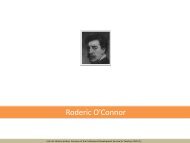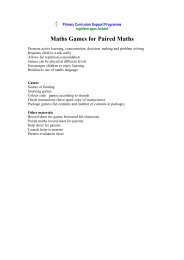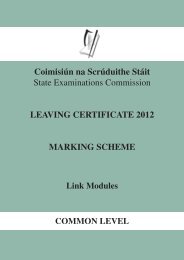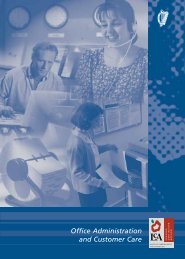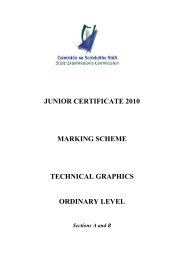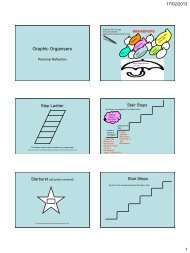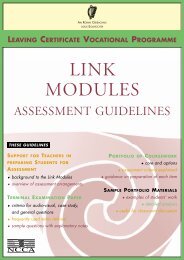What is Four in Balance? - PDST
What is Four in Balance? - PDST
What is Four in Balance? - PDST
You also want an ePaper? Increase the reach of your titles
YUMPU automatically turns print PDFs into web optimized ePapers that Google loves.
8Collaboration and leadershipSchool managers who show leadership support teachers <strong>in</strong> theirprofessional development. Such support <strong>is</strong> needed if teachers areto f<strong>in</strong>d ICT appeal<strong>in</strong>g and use it more effectively and efficiently<strong>in</strong> their lessons. Depend<strong>in</strong>g on the school’s situation, one schoolmanager may emphasize material factors (ICT <strong>in</strong>frastructure anddigital learn<strong>in</strong>g materials) while another focuses more on humanfactors (v<strong>is</strong>ion and expert<strong>is</strong>e).In previous chapters, we looked at the four basic elements of the <strong>Four</strong> <strong>in</strong><strong>Balance</strong> model. Th<strong>is</strong> chapter addresses the “plus factors” of the model:collaboration and leadership. These factors help make the use of ICT moreeffective.Collaboration <strong>is</strong> d<strong>is</strong>cussed <strong>in</strong> Section 8.1 and leadership <strong>in</strong> Section 8.2.The chapter concludes by look<strong>in</strong>g at what school managers are aim<strong>in</strong>g for<strong>in</strong> the future (Section 8.3).8.1 CollaborationCollaboration between teachers <strong>in</strong>volves their shar<strong>in</strong>g expert<strong>is</strong>e andmaterials <strong>in</strong> order to reach a common goal. Collaboration thus makes animportant contribution to teachers’ professional development (Van Veen,2010). By collaborat<strong>in</strong>g, teachers show one another how to use ICT <strong>in</strong> theirlessons and identify the relationship between ICT applications and pupilresults. In addition to hav<strong>in</strong>g a common goal, focus<strong>in</strong>g on pupil results<strong>is</strong> especially conducive to teachers’ professional development (Denn<strong>is</strong>,2010). That <strong>is</strong> because they feel challenged by <strong>in</strong>formation that offersthem support and they become aware of the implications of new work<strong>in</strong>gmethods for their teach<strong>in</strong>g practice (Timperley, 2007).66



